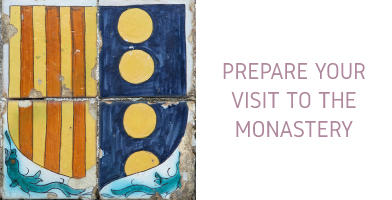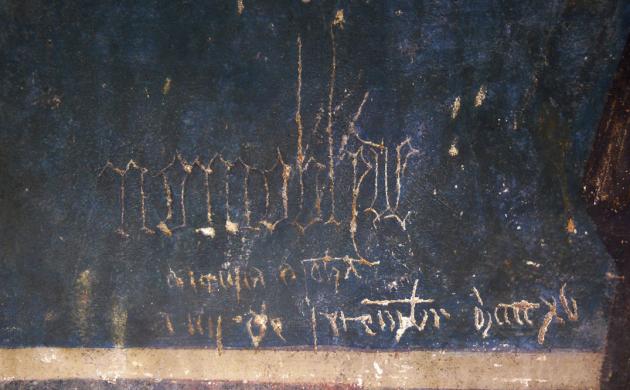
El blog del museu
Títol
Individualism in the Middle Ages
Created date
Introducció
We study in depth the concept of personal identity in the Middle Ages from a inscription in the chapel of St. Michael.
Nomoblide / diguila a johan / a iiii de setembre de m cccc xv
The recent reopening of St Michael’s Chapel has returned one of the most exceptional sets of Gothic paintings in Catalonia to the public view and will help to encourage the interest in cultural heritage conservation.
Aside from the importance of the chapel and the work of recovery instigated in the 19th century by Sister Eulària Anzizu, special mention should be made of an unusual inscription in old Catalan located between St Francis and St Clare and containing a rather evocative message: “Nomoblide / diguila a johan / a iiii de setembre de m cccc xv” (Do not forget me / Tell John / 4 September 1415). With the debate over its authenticity resolved – now known to date from the 15th century – and transcending the realm of romantic vandalism, this allegorical appeal allows a brief discussion on one of the most unapproachable aspects of everyday life in the Middle Ages: the notion of personal identity, individualism. If this is understood to be a reaffirmation of the self in the face of the surrounding community, then to get a closer idea of the reality of the Middle Ages it is necessary to ignore contemporary prejudices when drawing conclusions. What prompted the author to write this message? Was it meant to be timeless or ephemeral? Why did the author want to leave a record and what for?
The late Middle Ages brought together the cultural legacy of the previous three centuries, which would culminate in the Italian Humanism of the Renaissance in the 14th and 15th centuries and a reassessment of the relationship between man and God, with the rise of individualism. In Classical Antiquity there was, in theory, no individual self-awareness as understood today, and it was not until the consolidation of Christianity and the bonds this created in the community that this need for personal affirmation began to tentatively emerge. Medieval man sought integration in the group he belonged to and was only able to become aware of himself, his individuality, within his social group. Thus, the processes of individual self-affirmation and awareness of one’s own isolation, although different, are closely related.
It was a context where there could be no freedom without breaking away from the community, because people did not see themselves as independent personalities but as members of a community where they had to play a role. Personal freedom as understood today did not exist and the redemption and the complete fulfilment of man were only possible in the next world; it is precisely through their perception of death that we see the beginnings of the process of the development of awareness of individuality.
In the collective imagination of the Middle Ages, after someone died, the assessment of this person’s life was deferred until the Last Judgment, when a verdict was passed on the soul, there being an indeterminate period of time between the death of the individual and the judgment of that person’s actions, all the souls waiting together. However, the late Middle Ages witnessed a rupture provoked by the appearance of a new concept of the judgement of the soul, with the need for the departed to affirm themselves at the very moment of their death, the transition to death determining the uniqueness of the individual. Thus, death became the moment when man became aware of his individuality and a direct consequence of this was the proliferation of personalised effigies, like the ones of Queen Elisenda in the cloister and the monastery church.
The belief that human existence finishes after the death of the individual was not a symptom of the onset of a new European individuality but rather the consequence of the awareness of the individual already existing in medieval society. The two concepts, individual judgment and mass judgement, also coexisted paradoxically in medieval imagery. A new religious spirituality and a new perception of personal consummation emerged, which reforms introduced by the Cistercians for example, and in particular the mendicant orders such as the Franciscans, bear witness to.
In fact, it is thanks to them that the concern for individual reaffirmation began to emerge in Western Europe, initially within the community but also within individuals themselves, and without this change of perception the inscription scratched on the mural between the Franciscan founders cannot be understood. Although it is undoubtedly true that when the graffiti was written the chapel was not being used as a place of worship, who better than the Saints to act as intercessors and universalize not only the content of the message but also the process that led to this personal self-affirmation?
Enric M. Puga










